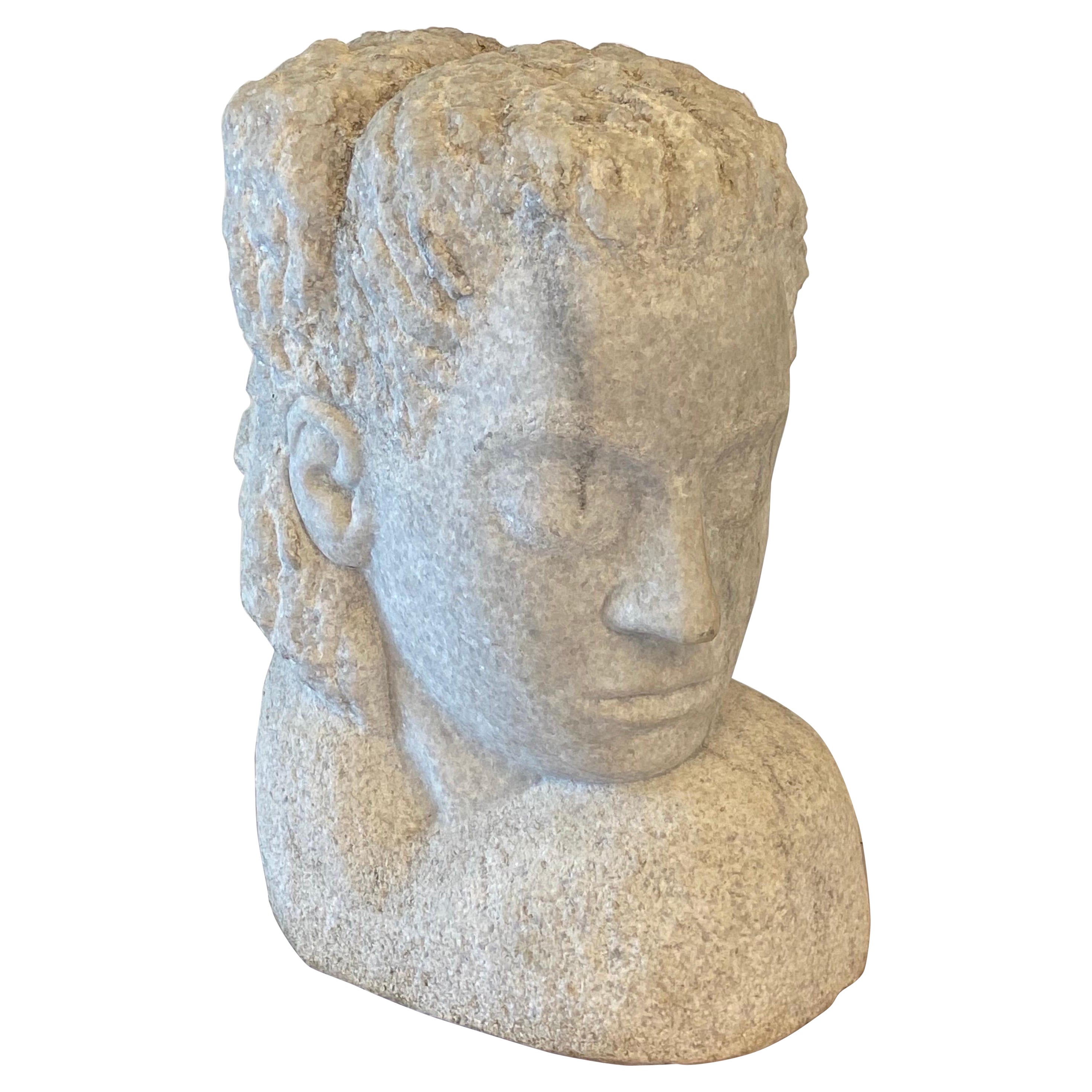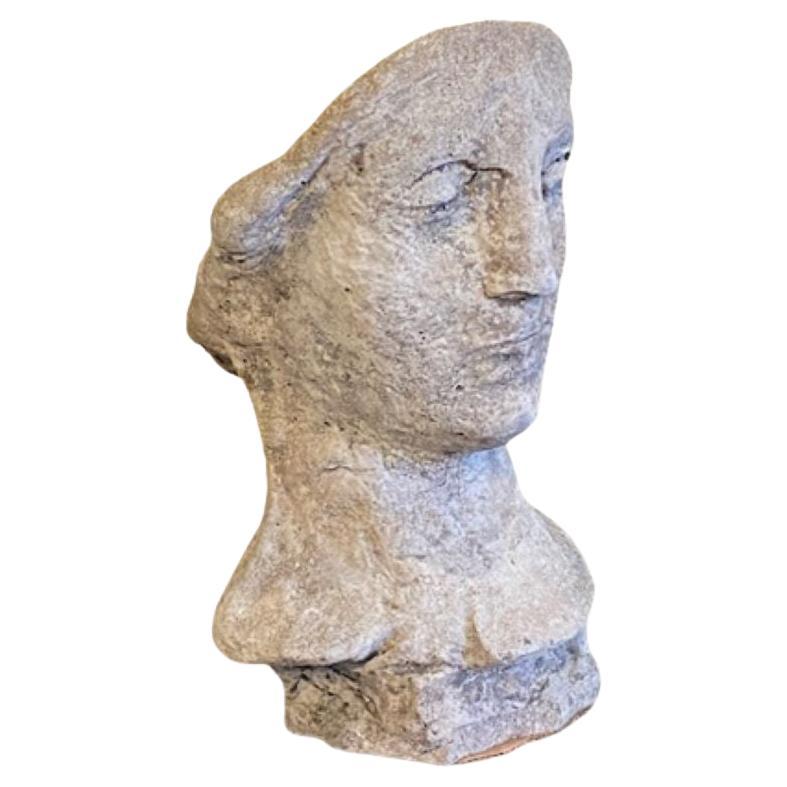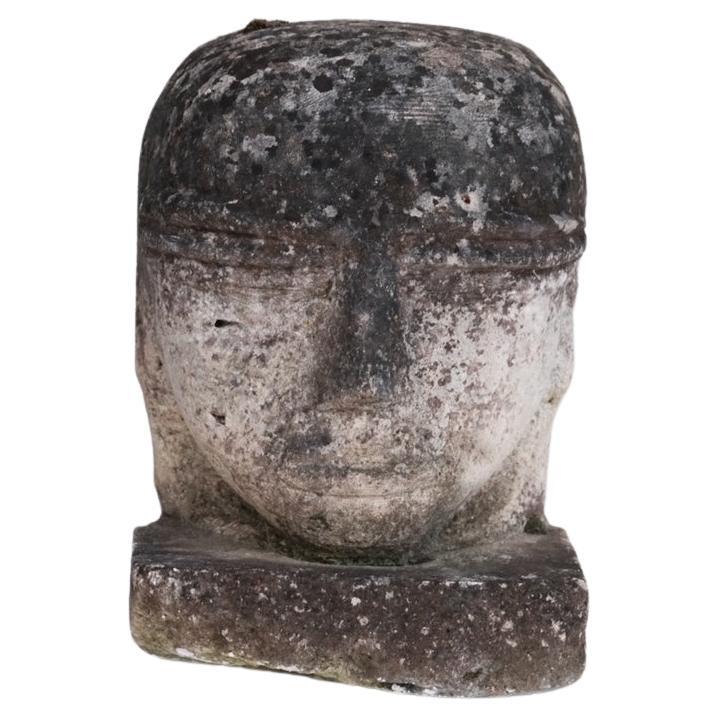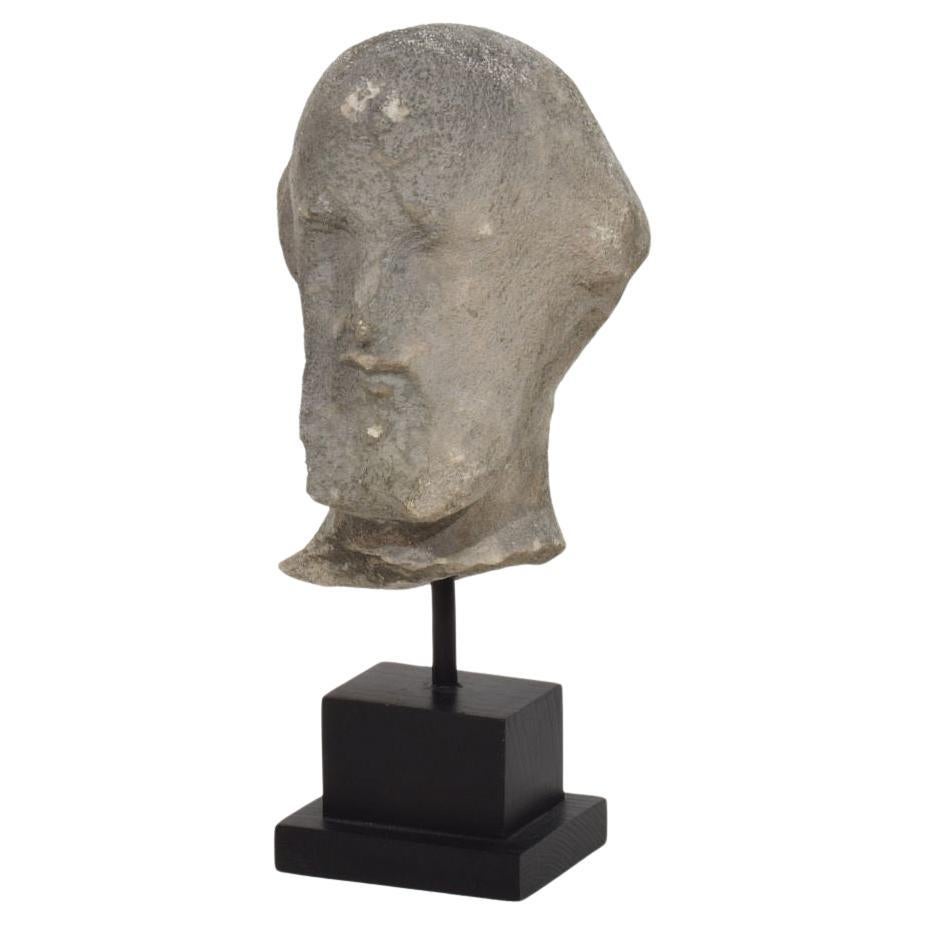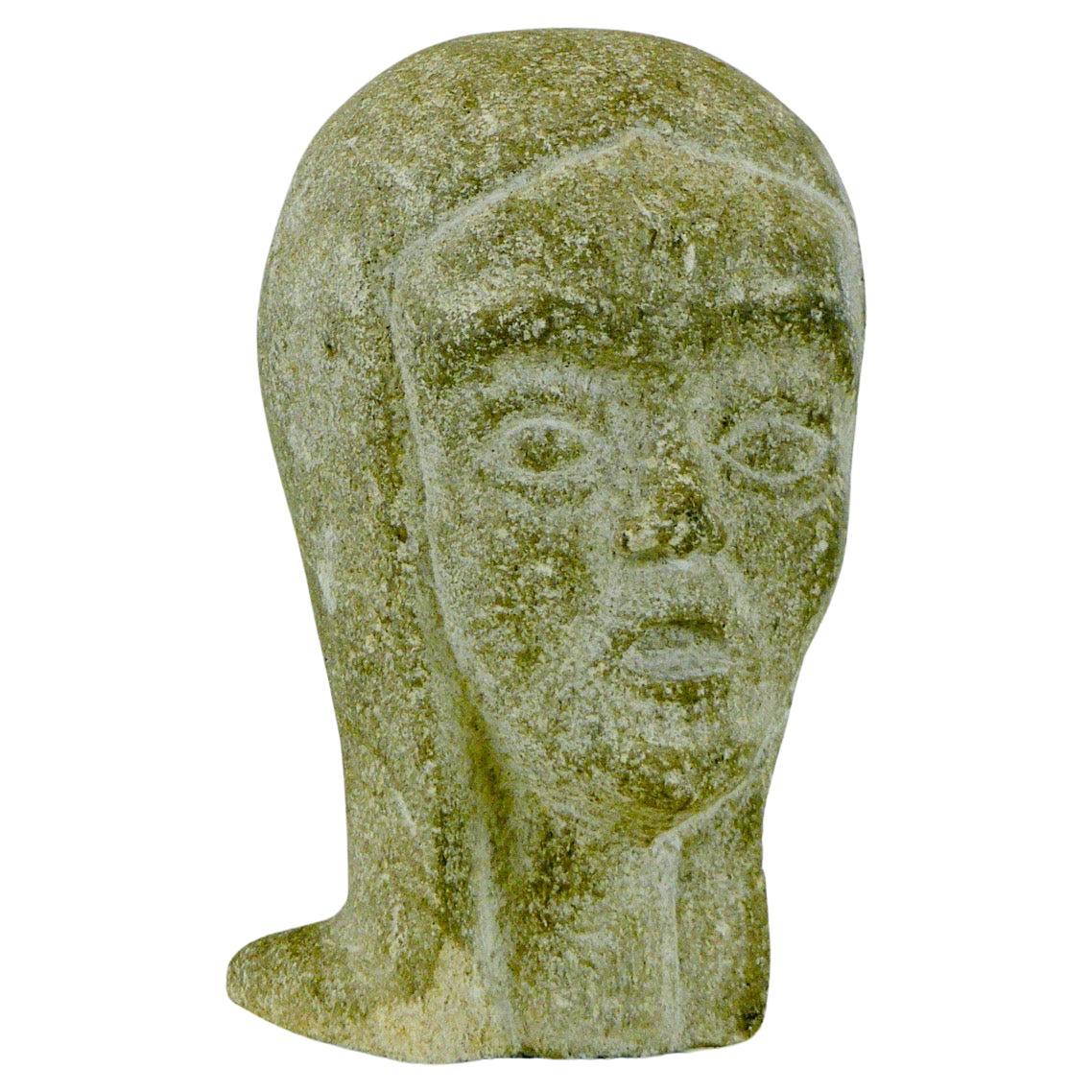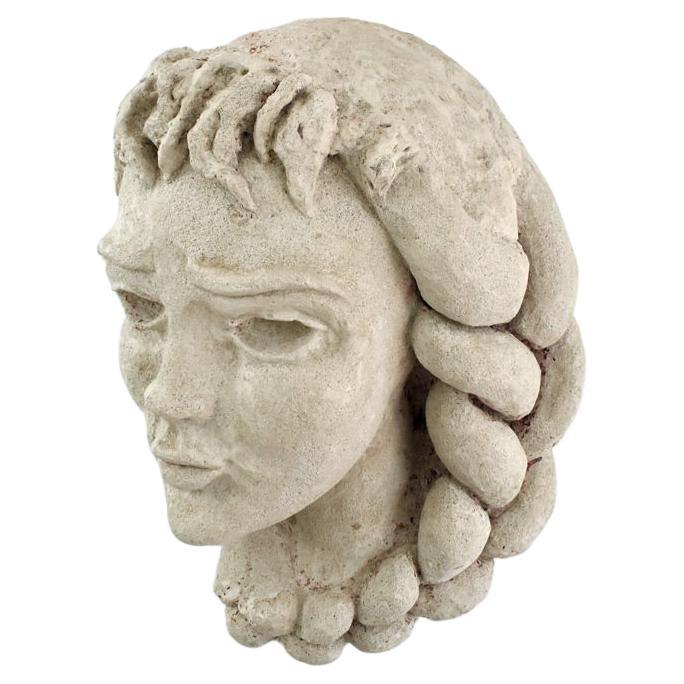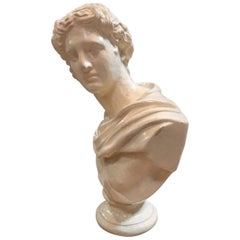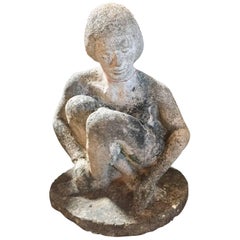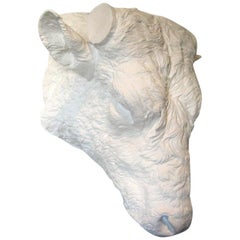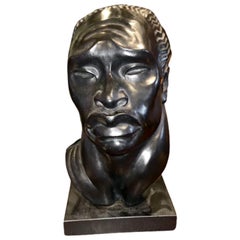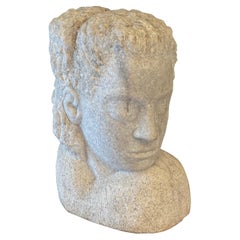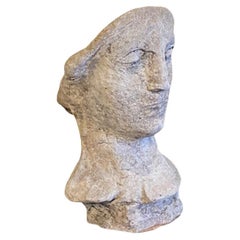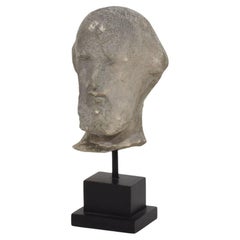Items Similar to French Carved Limestone Head of a Woman Sculpture
Want more images or videos?
Request additional images or videos from the seller
1 of 6
French Carved Limestone Head of a Woman Sculpture
$3,600
£2,714.42
€3,127.99
CA$4,994.17
A$5,595.94
CHF 2,912.90
MX$68,457.77
NOK 36,973.90
SEK 34,921.41
DKK 23,351.06
Shipping
Retrieving quote...The 1stDibs Promise:
Authenticity Guarantee,
Money-Back Guarantee,
24-Hour Cancellation
About the Item
French 1940's carved limestone head of a woman sculpture. Unattached to base.
- Dimensions:Height: 12 in (30.48 cm)Width: 12 in (30.48 cm)Depth: 6 in (15.24 cm)
- Materials and Techniques:
- Place of Origin:
- Period:
- Date of Manufacture:1940's
- Condition:Wear consistent with age and use. Unattached to base.
- Seller Location:Dallas, TX
- Reference Number:1stDibs: LU851441243662
About the Seller
5.0
Vetted Professional Seller
Every seller passes strict standards for authenticity and reliability
1stDibs seller since 2008
81 sales on 1stDibs
- ShippingRetrieving quote...Shipping from: Dallas, TX
- Return Policy
Authenticity Guarantee
In the unlikely event there’s an issue with an item’s authenticity, contact us within 1 year for a full refund. DetailsMoney-Back Guarantee
If your item is not as described, is damaged in transit, or does not arrive, contact us within 7 days for a full refund. Details24-Hour Cancellation
You have a 24-hour grace period in which to reconsider your purchase, with no questions asked.Vetted Professional Sellers
Our world-class sellers must adhere to strict standards for service and quality, maintaining the integrity of our listings.Price-Match Guarantee
If you find that a seller listed the same item for a lower price elsewhere, we’ll match it.Trusted Global Delivery
Our best-in-class carrier network provides specialized shipping options worldwide, including custom delivery.More From This Seller
View AllRoman Ceramic Bust
Located in Dallas, TX
Large Roman ceramic bust.
Category
Antique Late 19th Century Busts
Materials
Ceramic
$2,000
French 1930s Limestone Sculpture
Located in Dallas, TX
French 1930s limestone sculpture from Paris.
Category
Vintage 1930s Figurative Sculptures
Materials
Limestone
19th Century Beaux Arts Plaster Bull Head
Located in Dallas, TX
Plaster bull head from a French Butcher's shop.
Category
20th Century French Sculptures
Materials
Plaster
Pair of Mid Century African Busts
By Fred Press
Located in Dallas, TX
Pair of 1950's African Busts made by Fred Press.
Category
Vintage 1950s Busts
Materials
Bronze
18th Century French Statue in Terracotta
Located in Dallas, TX
18th century French terracotta statue with Madonna and child.
Category
Antique 18th Century French Renaissance Statues
Materials
Terracotta
Midcentury Reproduction Hanging Plaster Lion Head
Located in Dallas, TX
Midcentury reproduction of hanging lion head made out of plaster.
Category
Antique Mid-19th Century American Decorative Art
Materials
Plaster
You May Also Like
Brancusi Style Marble Head of a Woman, Early 20th Century Signed
By Brancusi
Located in West Palm Beach, FL
Well portioned modernist sculpture of a woman in the early art deco style.. An intense face with strong chisel marks and fine detail… Circa early 20th century.
Category
Early 20th Century Art Deco Busts
Materials
Marble
Stone Neoclassical Bust Garden Sculpture
Located in Nantucket, MA
Vintage Stone Neoclassical Bust Garden Sculpture, circa 1920s, a hand sculpted stone dust or cement ancient Grecian style "archeological" bust of Venus-Aphrodite. Found in old garden...
Category
Early 20th Century American Neoclassical Revival Statues
Materials
Cement
Unusual Carved Stone French Head Sculpture
Located in London, GB
An unusual artist carved stone head.
France, c1920s.
One of a pair sold individually.
Location: Belgium Gallery.
Dimensions: 35 H x 18 D x 24 W in cm.
Delivery: P...
Category
Mid-20th Century French Figurative Sculptures
Materials
Stone
Small 18th Century French Carved Stone Baroque Head Of A Saint
Located in Buisson, FR
Lovely small carved stone head of a Saint with a great expression.
France, circa 1750. Weathered. measurements include the wooden base
H:20cm W:8,5cm D:10,5cm
Category
Antique 18th Century French Baroque Figurative Sculptures
Materials
Stone
$353 Sale Price
48% Off
A granite sculpture of a young woman's head - France - 1960
Located in SOTTEVILLE-LÈS-ROUEN, FR
A refined granite sculpture portraying the head of a young woman, believed to likely represent Saint Joan of Arc, crafted in France during the 1950s. It features a magnificent patina...
Category
Vintage 1960s European Gothic Busts
Materials
Granite
$1,101 Sale Price
20% Off
Bust sculpture in stone, XXth c.
Located in Lisboa, PT
Bust sculpture in stone representing a young lady. France, XXth c.
Category
20th Century French Decorative Art
Materials
Stone
More Ways To Browse
Bust Of A Head
Sculpture Of French Woman
Head Of A Woman Sculpture
Limestone Head
Grand Tour Sculpture Plaster
Wooden Bust Female
Bust Philosopher
Zeus Bust
Apollo Marble Statue
Marble Cleopatra
Bust Plaster Male
Bust Sculpture Military
Marble Bust Augustus
Art Deco Female Bust
Greek Terracotta Head
Marie Antoinette Bust
African Carved Bust
Marcus Aurelius
